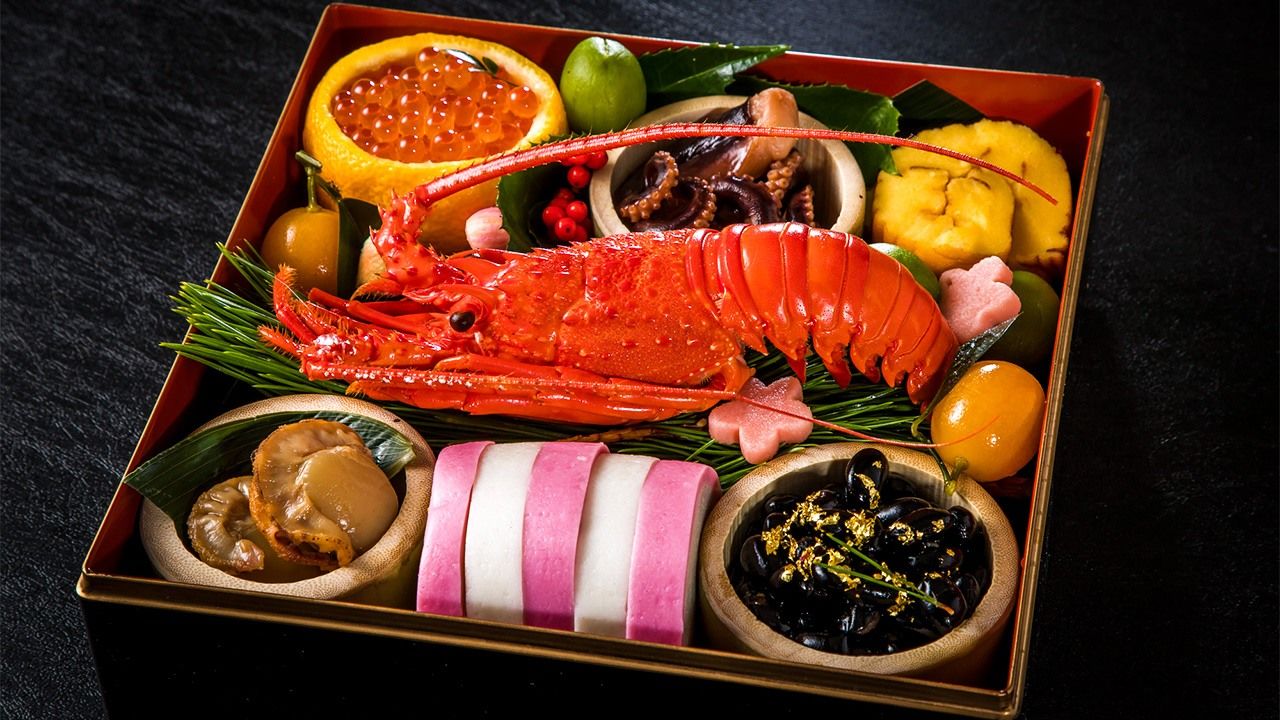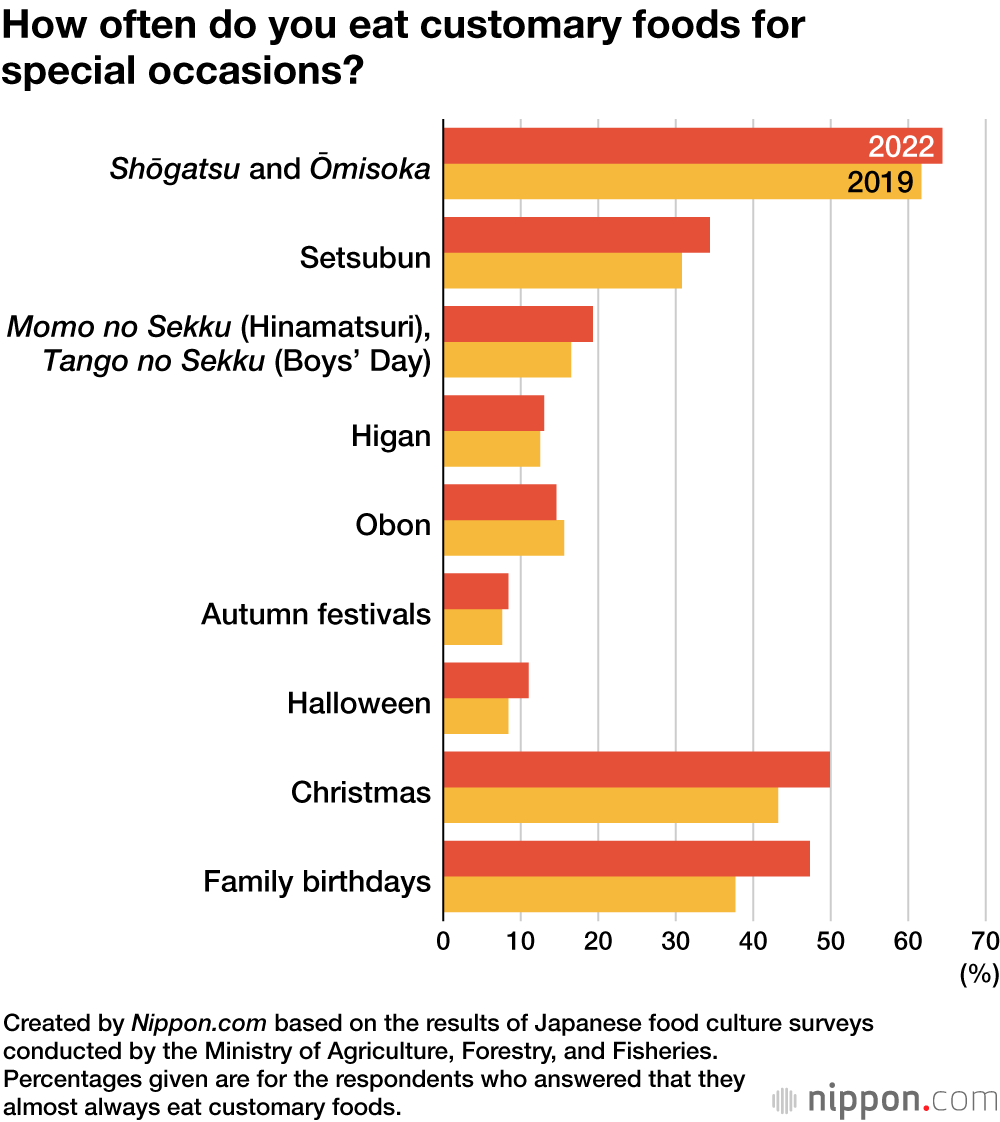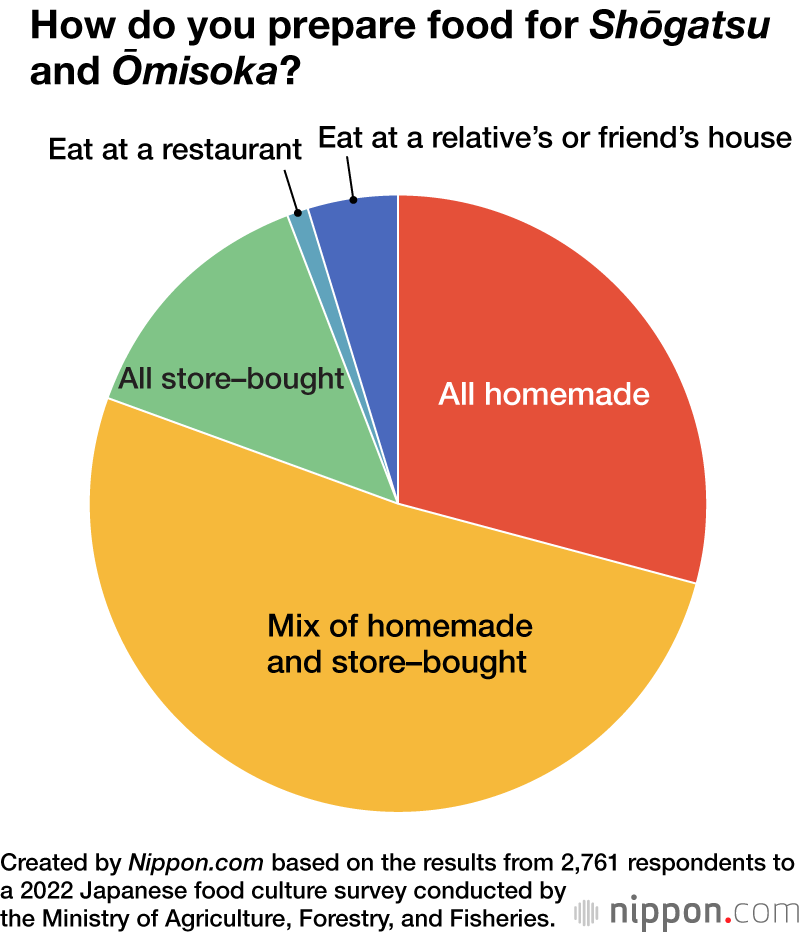
Over 60% of Japanese Eat New Year Foods, But Prefer Store-Bought
Food and Drink Culture- English
- 日本語
- 简体字
- 繁體字
- Français
- Español
- العربية
- Русский
A Japanese survey, conducted online in February 2023, asked 3,000 men and women aged from 20 to 69 about their thoughts on the nation’s food culture. The survey target was split into nine regions across Japan according to population ratio by gender and age.
According to the results, out of those who said they “almost always eat” customary foods for special occasions, the most common time of year, at 64.4%, was Ōmisoka (New Year’s Eve) and Shōgatsu (Japanese New Year), with people partaking of traditional foods like osechi ryōri, toshikoshi soba, and zōni soup. The second most common occasion, with 34.4%, was Setsubun, the February festival marking the end of winter and beginning of spring, when people eat foods such as fukumame roasted soybeans, ehōmaki sushi rolls, and iwashini simmered sardines.
This was followed by a joint entry for Momo no Sekku on March 3 and Tango no Sekku on May 5 with 19.3%. At the former, also known as Hinamatsuri, people typically eat chirashi-zushi, which is vinegared rice topped with an assortment of fish and ingredients. The latter, also known as Boys’ Day, features foods like kashiwamochi rice cakes filled with an (sweetened bean jam) and wrapped in oak leaves, and chimaki, which is steamed glutinous rice wrapped in bamboo leaves.
Meanwhile, when it came to occasions such as Higan, or spring and autumn equinox, where it is customary to eat botamochi and ohagi, both variants of glutinous rice smothered in bean paste, and the Obon summer festival, known for foods like cold sōmen noodles and again botamochi, more than 40% of respondents said they “hardly ever eat” those kinds of foods. This rose to over 50% in the case of autumn festivals, where the tradition is to eat chirashi-zushi and traditional regional foods.
Apart from the traditional Japanese occasions, 49.9% of respondents said that they “almost always eat” food customary for Christmas like chicken and Christmas cake, and 47.3% celebrated family members’ birthdays with foods like sekihan (red rice made with azuki beans and mochi rice) and cake. When compared to the results of the previous survey in 2019, there had been an increase in the percentage of people who ate customary foods for Christmas, birthday, and Setsubun.
The survey also looked at how the people who said they eat the customary food at Shōgatsu and Ōmisoka prepared it. This revealed that 29.2% “often make all the food myself or with my family,” 51.4% prepared a “mix of homemade and store-bought,” and 13.7% went with “all store-bought.”
(Translated from Japanese. Banner photo © Pixta.)

